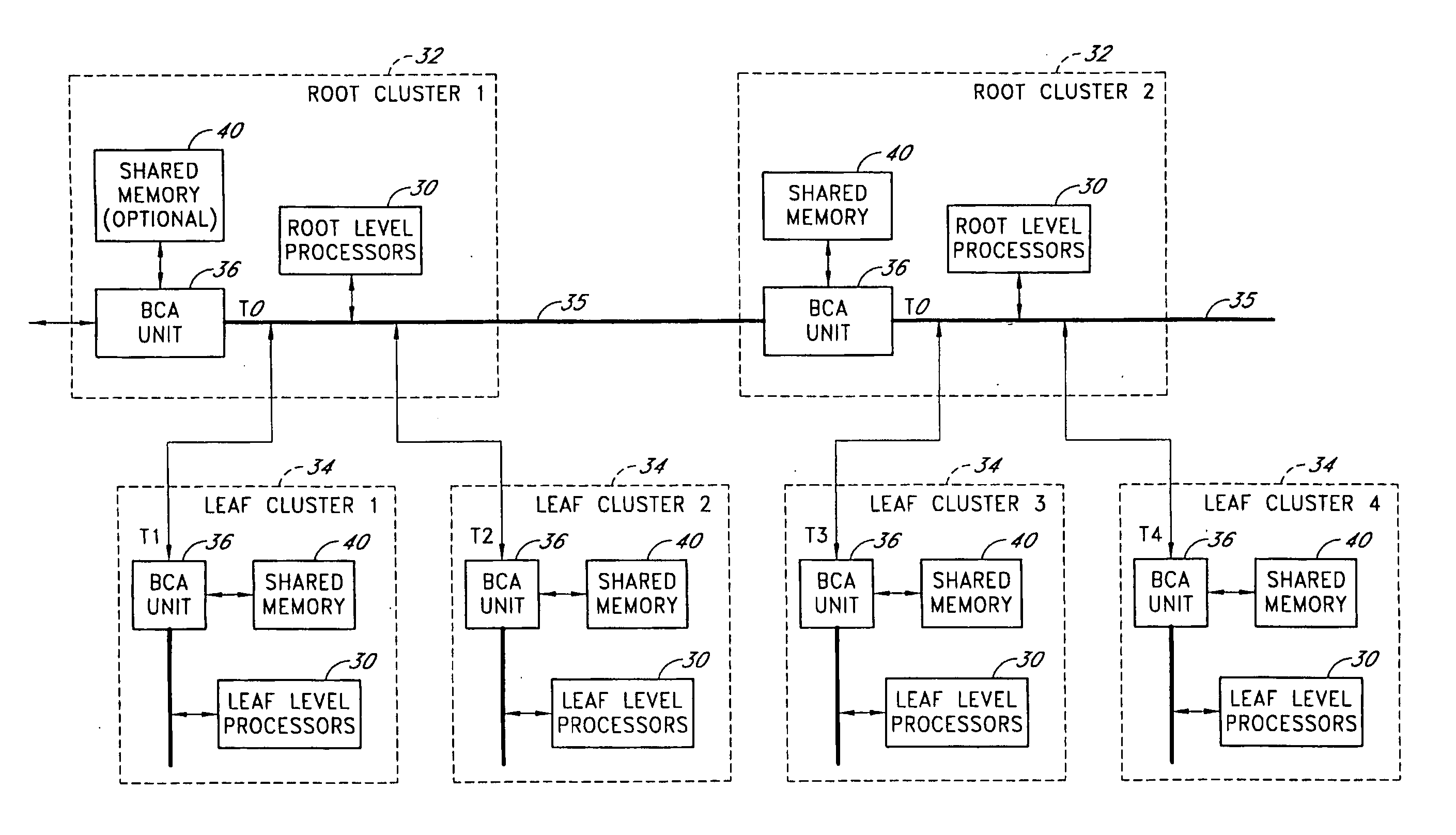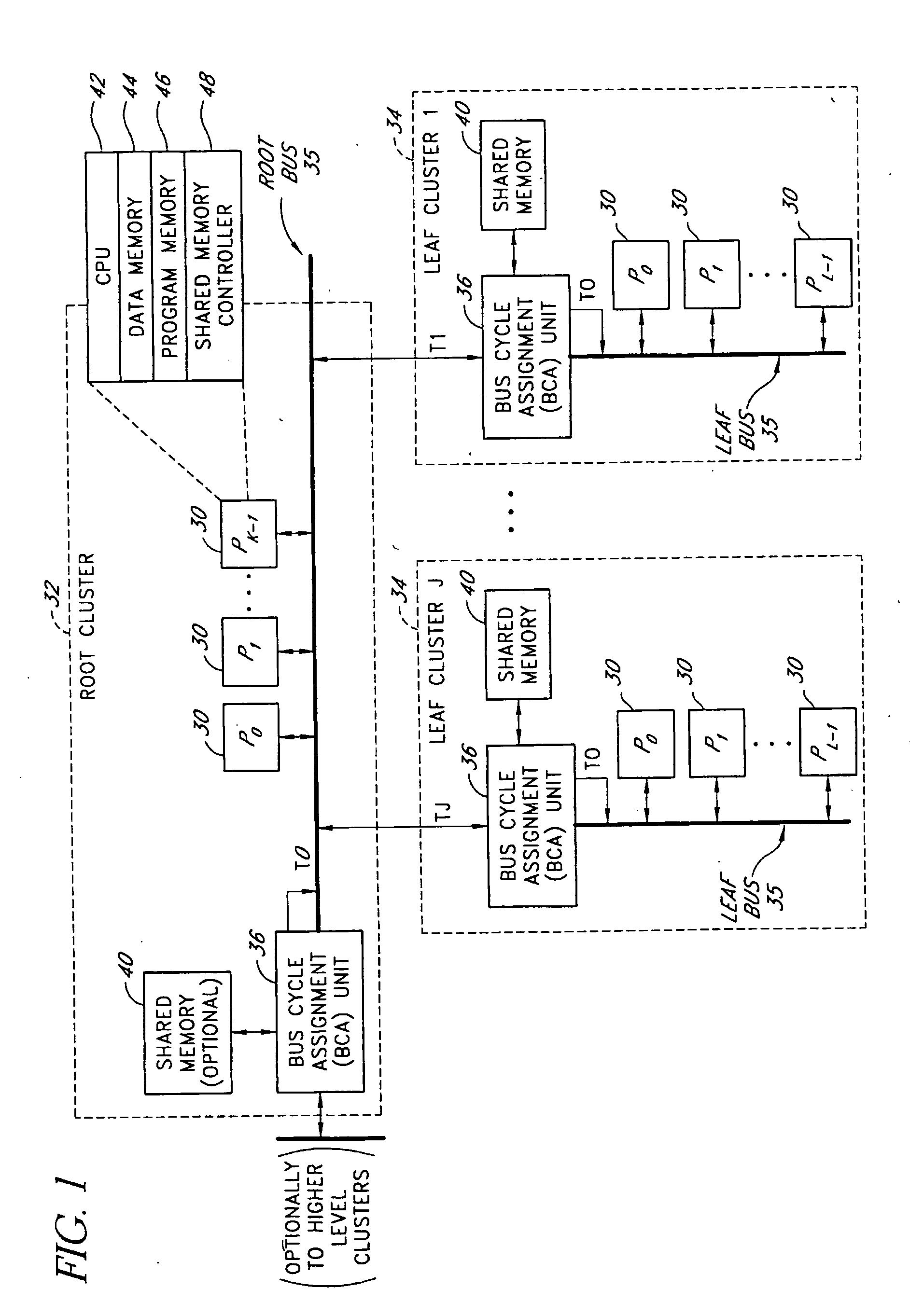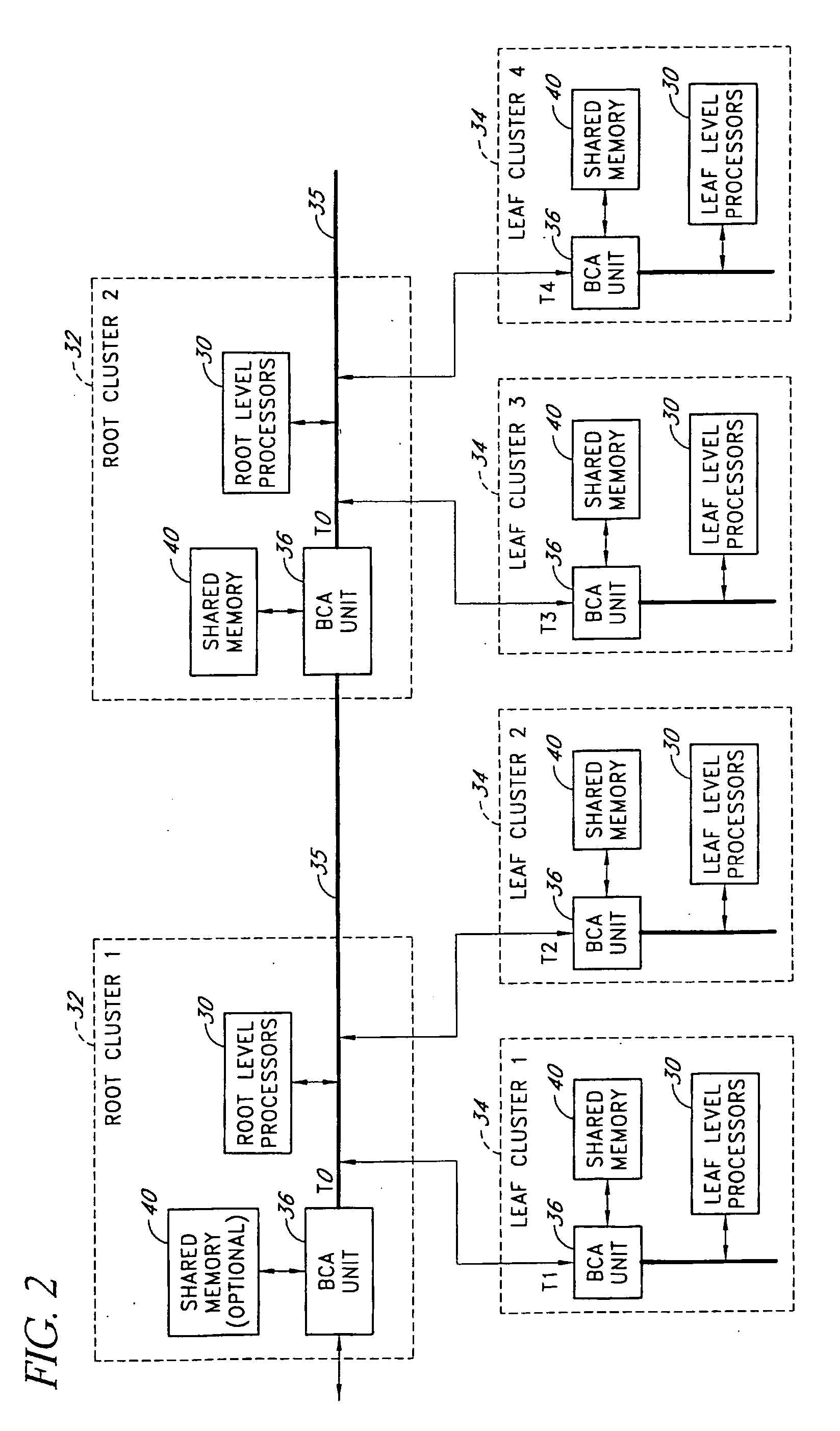Hierarchical bus structure and memory access protocol for multiprocessor systems
a multiprocessor system and bus structure technology, applied in the direction of memory systems, electrical apparatus construction details, instruments, etc., can solve the problems of large number of signal lines, unsatisfactory delays, and significant chip area, and achieve the effect of improving bus utilization
- Summary
- Abstract
- Description
- Claims
- Application Information
AI Technical Summary
Benefits of technology
Problems solved by technology
Method used
Image
Examples
Embodiment Construction
[0021] The present invention provides a hierarchical bus structure through which clusters of processors may be arranged and interconnected within a hierarchy to facilitate processor communications via shared memories. The bus structure is well suited for voice processing applications in which clusters of embedded processors processes voice streams in parallel, although the architecture is not so limited.
[0022] The invention also provides an improved memory access protocol and bus interface for controlling processor accesses to a shared memory. This access protocol and bus interface are preferably incorporated into the hierarchical bus structure, but also have independent utility.
I. Overview of Hierarchical Bus Structure
[0023]FIG. 1 illustrates a hierarchical processor arrangement in which processors 30 are arranged within a single root cluster 32 and J leaf clusters 34. (A cluster is referred to herein as a “leaf” cluster if it does not have any sibling clusters, and is referred...
PUM
 Login to View More
Login to View More Abstract
Description
Claims
Application Information
 Login to View More
Login to View More - R&D
- Intellectual Property
- Life Sciences
- Materials
- Tech Scout
- Unparalleled Data Quality
- Higher Quality Content
- 60% Fewer Hallucinations
Browse by: Latest US Patents, China's latest patents, Technical Efficacy Thesaurus, Application Domain, Technology Topic, Popular Technical Reports.
© 2025 PatSnap. All rights reserved.Legal|Privacy policy|Modern Slavery Act Transparency Statement|Sitemap|About US| Contact US: help@patsnap.com



